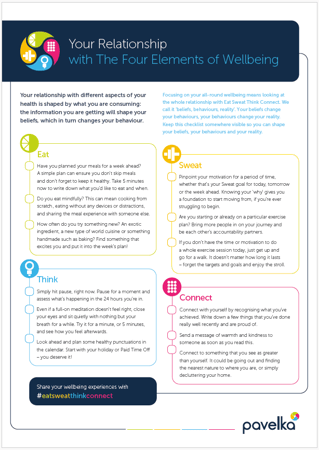
CHALLENGE - GRIP STRENGTH TEST
Grip Strength
Grip strength isn’t just about a firm handshake – although some may say that’s vital for a good first impression! Grip strength serves as a holistic indicator of overall health and functional fitness because it reflects the integration of muscular strength, joint stability, and neurological coordination, offering valuable insights into your physical wellbeing.
Grip strength is an indicator of health for a number of reasons:
Muscle Strength: Grip strength is correlated with overall muscle strength. It engages various muscles in the hand, wrist, forearm, and even the upper arm and shoulder. Stronger muscles often signify better physical conditioning and health.
Functional Ability: Our hands are involved in numerous daily tasks. Strong grip strength is essential for activities like carrying groceries, opening jars, lifting objects, and performing various manual tasks. It reflects one's ability to function independently.
Bone Density: Studies have suggested a correlation between grip strength and bone mineral density. Better grip strength is associated with higher bone density, which reduces the risk of fractures and indicates healthier bones.
Health Conditions and Longevity: Grip strength is considered a potential predictor of overall health and longevity. Individuals with weaker grip strength may be at higher risk of developing certain health issues such as cardiovascular disease, COPD or frailty, or experiencing complications.
Chronic Conditions: Grip strength can be affected by chronic conditions such as arthritis, diabetes, cardiovascular diseases, and neurological disorders. Monitoring changes in grip strength over time can provide insights into an individual's health status and potential progression of these conditions.
Aging: Grip strength tends to decline with age. Tracking changes in grip strength can help assess age-related declines in muscle function and overall physical capabilities.
Interpreting Results:
Compare the recorded grip strength measurements to reference values for your age and gender to understand where your grip strength falls in relation to average or expected values.
Men Hand Grip Strength in Kilograms: Mean (SD)
| Age | Right | Left |
|---|---|---|
20-29 |
47 (9.5) |
45 (8.8) |
30-39 |
47 (9.7) |
47 (9.8) |
40-49 |
47 (9.5) |
45 (9.3) |
50-59 |
45 (8.4) |
43 (8.3) |
60-69 |
40 (8.3) |
38 (8.0) |
70+ |
33 (7.8) |
32 (7.5) |
Women Hand Grip Strength in Kilograms: Mean (SD)
| Age | Right | Left |
|---|---|---|
20-29 |
30 (7) |
28 (6.1) |
30-39 |
31 (6.4) |
29 (6) |
40-49 |
29 (5.7) |
28 (5.7) |
50-59 |
28 (6.3) |
26 (5.7) |
60-69 |
24 (5.3) |
23 (5) |
70+ |
20 (5.8) |
19 (5.5) |
How to test grip strength at home without equipment:
Lift and Hold Test:
- Choose an object with a known weight that you will use each time you repeat the test – such as a water bottle, tin of canned food, or a filled water bottle.
- Lift and hold the item with your arm extended.
- Time how long you can maintain the grip. The longer you can hold the object the stronger your grip strength.
*Use the same object weight each time you test, with the same grip.
Squeeze and Release Test:
- Hold a flexible, soft ball in your hand.
- Squeeze and release repetitively for 60 seconds.
- The number of successful squeezes can be an indicator of grip endurance.
*Ensure you fully squeeze each time you count for accuracy.
Consider grip strength alongside other health assessments
Measuring grip strength is relatively simple, making it a convenient tool for health professionals to evaluate overall strength and monitor changes in a person's health and physical capabilities over time. However, while grip strength can provide insights into health, it's just one of many indicators and should be considered alongside other health assessments for a comprehensive view of an individual's wellbeing.

The Four Elements
Pavelka collaborates with individuals and businesses to establish a wellbeing foundation that enhances all areas of life
Through the established framework of the Four Elements, Eat, Sweat, Think, and Connect, we enable individuals and organizations to embed a comprehensive approach to wellbeing.
We invite you to explore The Four Elements with a downloadable resource and the videos below.
About Pavelka
At Pavelka, we share a deep commitment to fostering a culture of wellbeing in the workplace. Our global team collaborates closely with Human Resources, People & Culture, and Learning & Development departments to conceptualize and execute comprehensive wellbeing programs.
These initiatives, ranging from webinars to gamified challenges, are designed to seamlessly integrate into employees' daily lives, bridging the gap between work, home, and the world.
Want to explore further?
Discover how we help organizations and teams seeking healthier, more engaged work environments.



